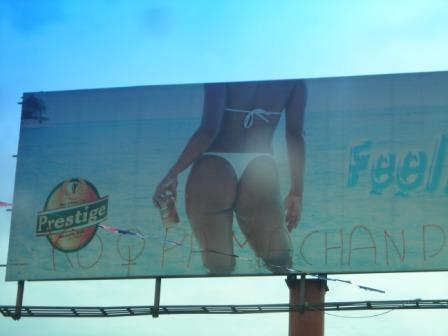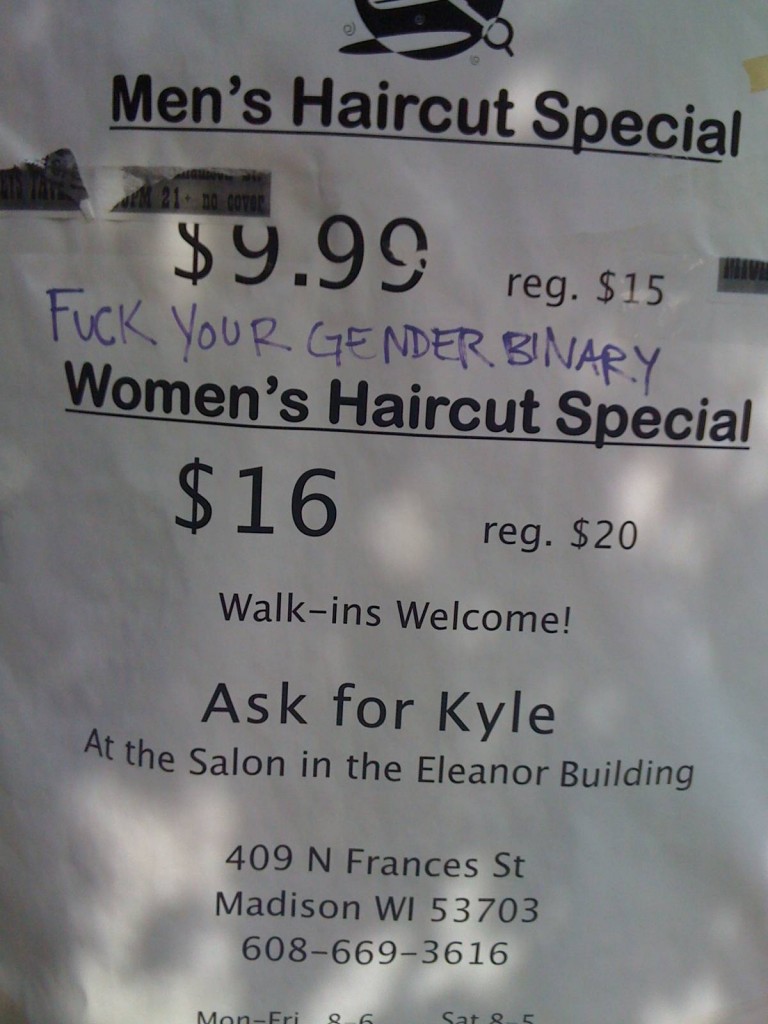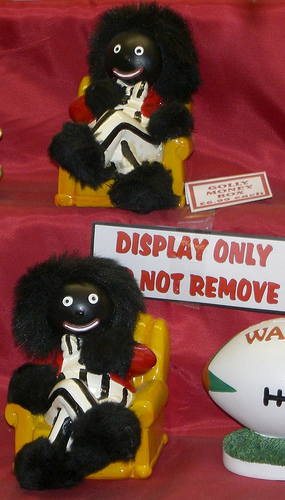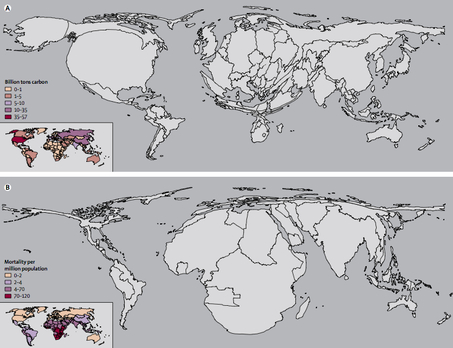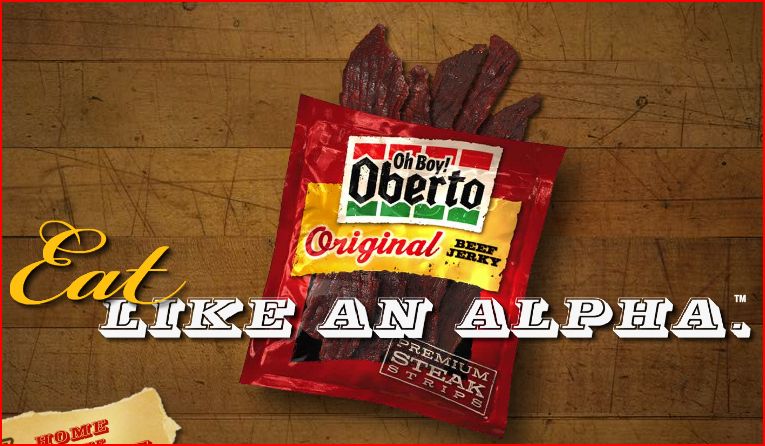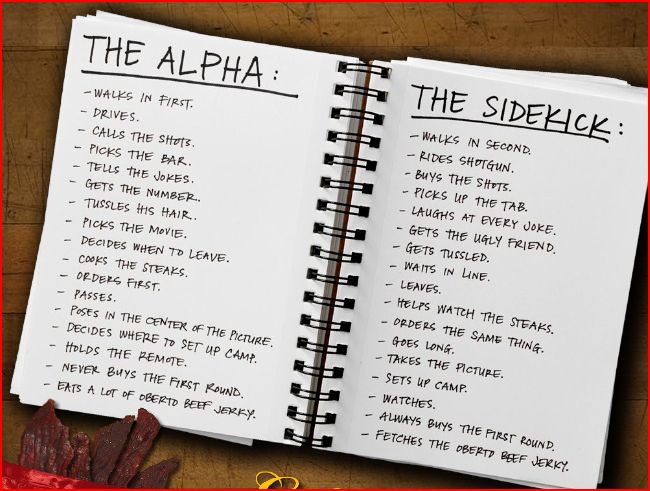Flashback Friday.
Toban B. sent in some photographs and a discussion of how energy drinks are gendered.
Energy drinks are already gendered to begin with in a couple of different ways at least: (1) they are marketed as hydration for athletes and sports is a masculine arena and (2) women aren’t usually encouraged to consume “extra” calories. But, in addition to being seen as somehow for men, Toban shows how a particularly violent and aggressive kind of masculinity is reproduced in the marketing, even across different companies.
Monster energy drinks include slashes on the packaging that look like a vicious scratch and what appears to be a crosshair and bullet holes (bad aim?):

Notice that the “flavor” in the picture above is “Sniper.” Toban notes that “Assault” and “M-80” are also flavors:
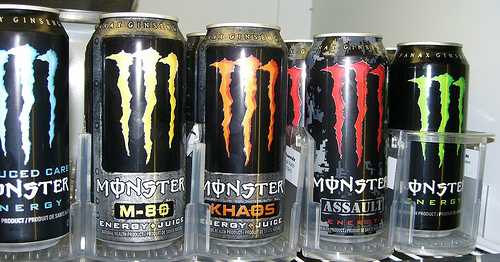
The can for the Assault-flavored drink also features a camouflage design, invoking militarism.
They call their “shooters” “Hitman”:
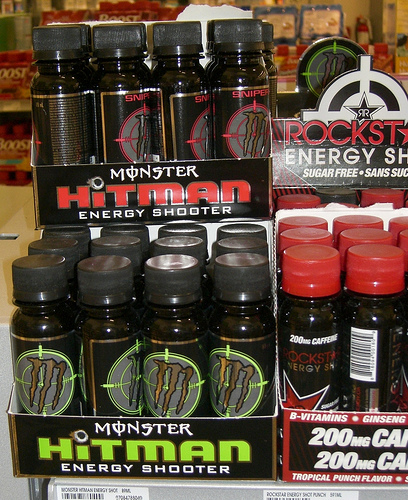
Both Monster and Guru link their product directly to (extreme) sports:
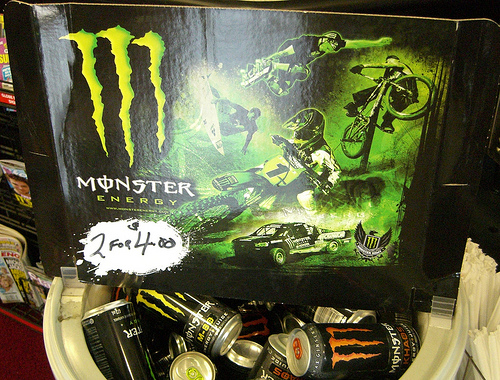
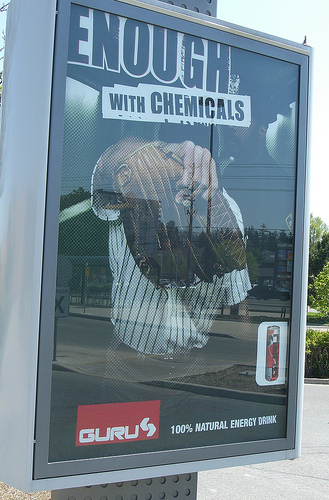
Full Throttle and Amp (“Overdrive”) go for a connection to aggressive driving:
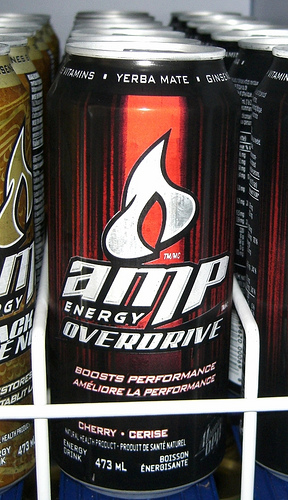
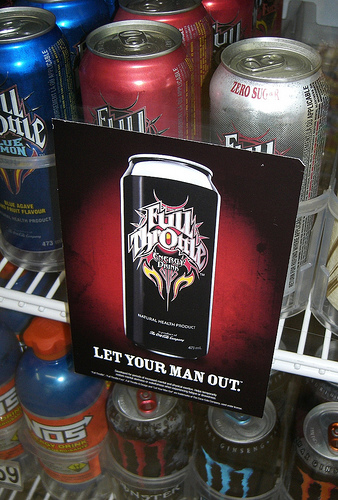
Full Throttle energy drinks make it explicit with the tagline, “Let Your Man Out.”
Toban notes that it’s ironic that a lot of these products are marketed as health drinks when, in fact, internalizing an aggressive form of masculinity is associated with taking health risks (e.g., refusing to wear seat belts or hard hats, drinking hard). “In any case,” Toban concludes, “this marketing normalizes and makes light of a lot of aggression and danger that we should be opposing.” And which, I will add, isn’t good for men or women.
See also our post with hilarious fake commercials making fun of energy drinks and hypermasculinity.
Originally posted in 2009.
Lisa Wade, PhD is an Associate Professor at Tulane University. She is the author of American Hookup, a book about college sexual culture; a textbook about gender; and a forthcoming introductory text: Terrible Magnificent Sociology. You can follow her on Twitter and Instagram.


